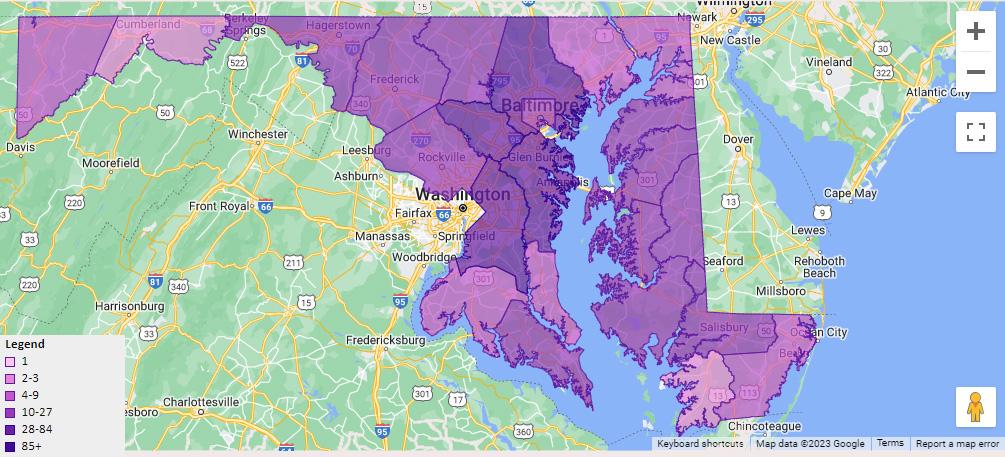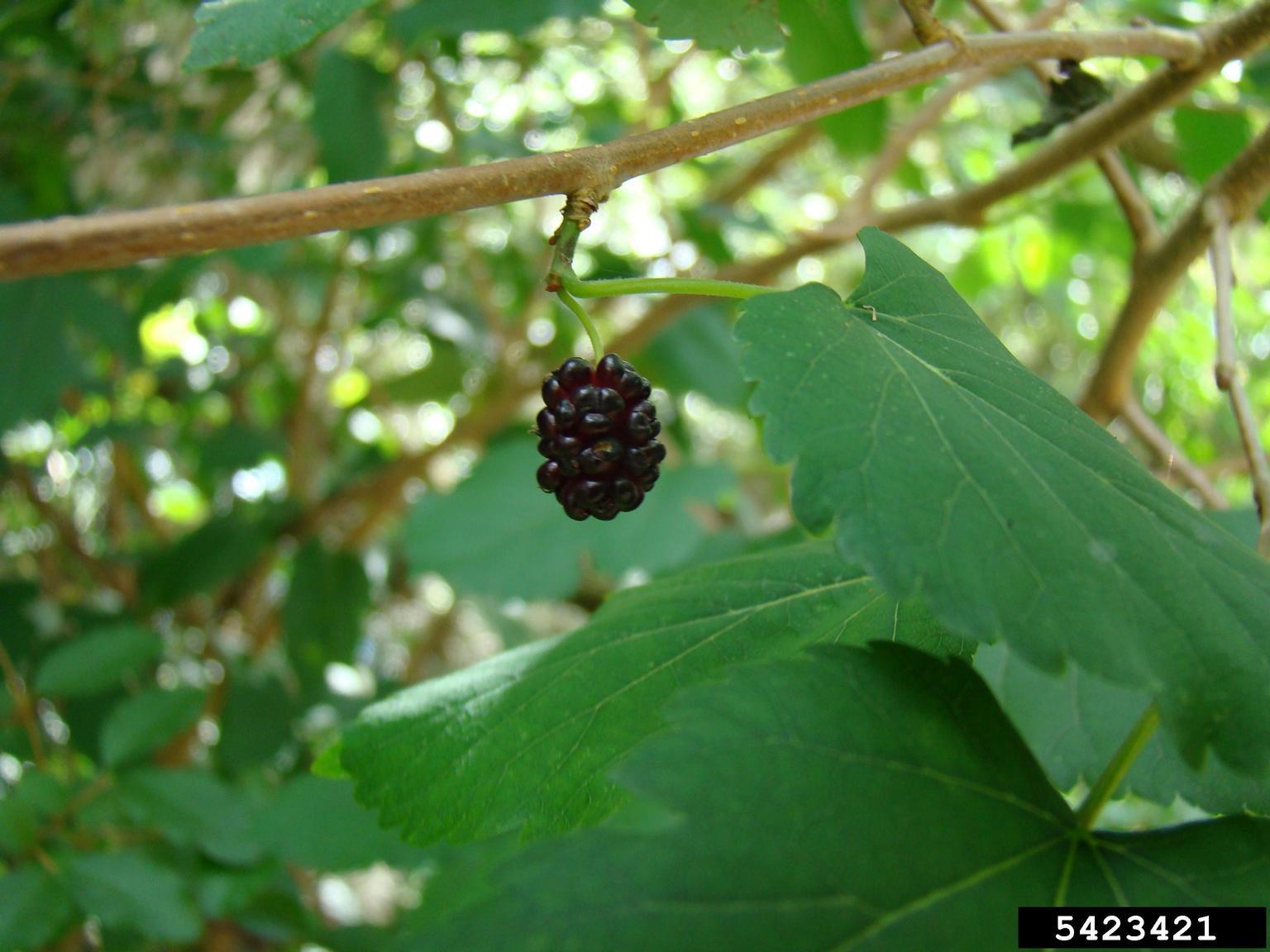From Fall 2023 issue of Branching Out. Subscribe to Branching Out here. Read more Invasives in Your Woodland articles here. This article contains information current as of date of publication.
We have mentioned a number of plant species in this series that were imported to North America with the best intentions— for erosion control, as cattle forage, or simply for landscaping ornamentation. In this issue, we spotlight another imported plant, the white mulberry, which reached our shores during the colonial period in hopes of creating a silkworm industry. In its native range in northern China, silkworms feed on the white mulberry and then spin cocoons of silk that can then be harvested. As the silkworm, which has been domesticated in Asia for centuries, feeds only on white mulberry leaves, colonial entrepreneurs imported both the tree and the insect, only to discover that silkworms don’t do well in this climate.
The tree, however, does, and does so with such vigor that it is not only invasive but is found in every Lower 48 state except Nevada. As white mulberry is found in every Maryland county, this issue’s map shows its reported concentration across the state (darker shades of purple represent greater concentrations.

from Maryland Biodiversity Project.
What is it?
White mulberry (Morus alba) is a fast-growing and short-lived tree that can grow up to 50 feet high, with a narrow trunk of less than 2 feet in diameter and a wide spreading crown. It grows well in disturbed areas as well as on hillsides and in forest openings and margins in a wide range of elevations. It can grow in a variety of light conditions, from part shade to full sun, and can tolerate a variety of soil conditions, including sand, clay, and well-drained areas.
Its greatest threat as an invasive lies in its threat to native red mulberries (Morus rubra). The white mulberry appears to be outcompeting and replacing the native species. Red mulberries are more selective about growing conditions and locations, but cross-pollination with white mulberries results in hybrids that are closer to the white species than the red. Additionally, some research suggests that while mulberry roots transmit a harmful root disease to reds.
How does it spread?
While white mulberry can spread via its roots, it can also spread via pollen and via animals. The stamens within the catkins serve as catapults and can launch the pollen grains at the equivalent of 350 mph—the fastest such movement known in the plant kingdom. Animals devour the fruit and then excrete the seeds that colonize new areas. Each tree can produce an estimated twenty million seeds.
How can I identify it?
Identification can be tricky. White mulberry leaves are glossy on top, and can be toothed, lobed, or unlobed. However, red mulberry leaves are larger, less shiny, and hairy on the underside. Perhaps the best indicator is the growing location. If the tree is in a high-quality soil environment or inside a woodland, it’s likely a native red. If it’s growing on a forest margin or a disturbed area, it’s a white. See the photo gallery below,
How can I control it?
If possible, pull white mulberry seedlings as soon as they are detected. More mature trees can be cut down during the growing season, followed by an immediate herbicide application to the stump to destroy the root system. Foliar spraying can be effective as long as non-target species are not impacted.
For more information:
Learn more about white mulberry:
Invasive Plants in Pennsylvania: White Mulberry (Pennsylvania DCNR)
Weed of the Week: White Mulberry (invasive.org)
White Mulberry (invasive.org)
White mulberry (Woody Invasives of the Great Lakes Collaborative)
